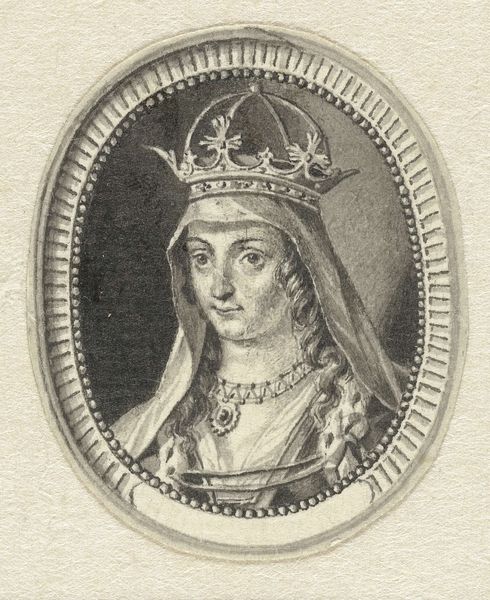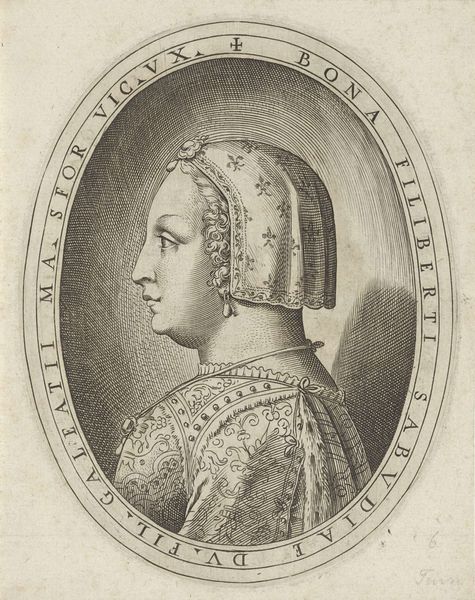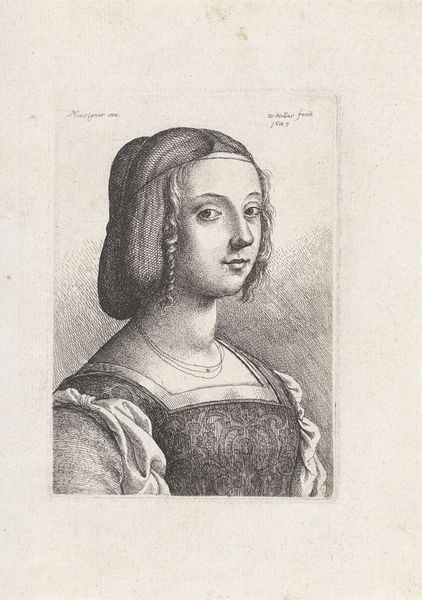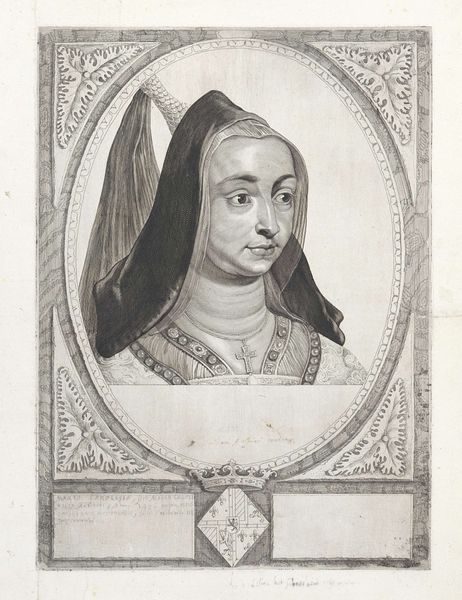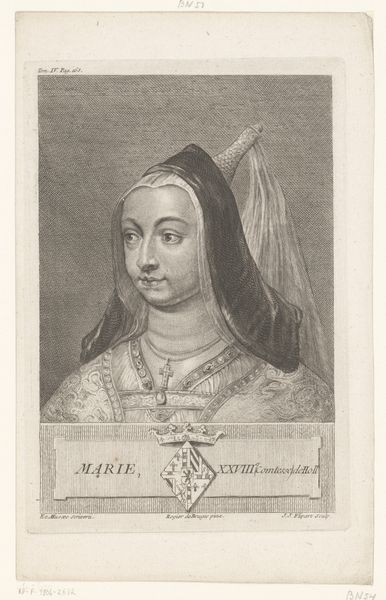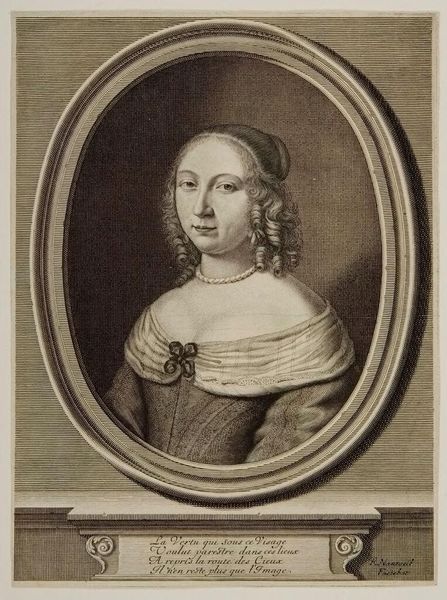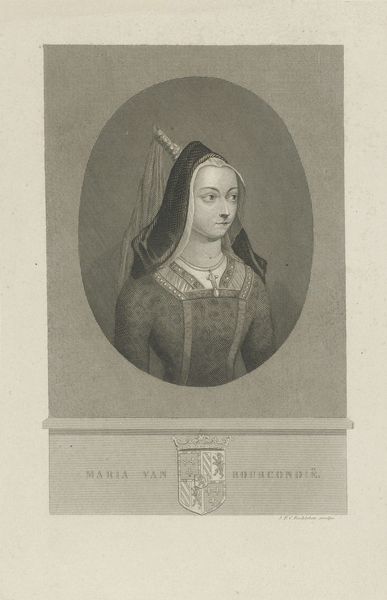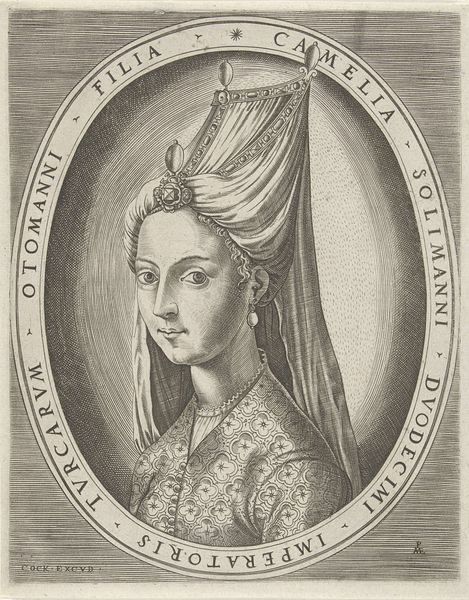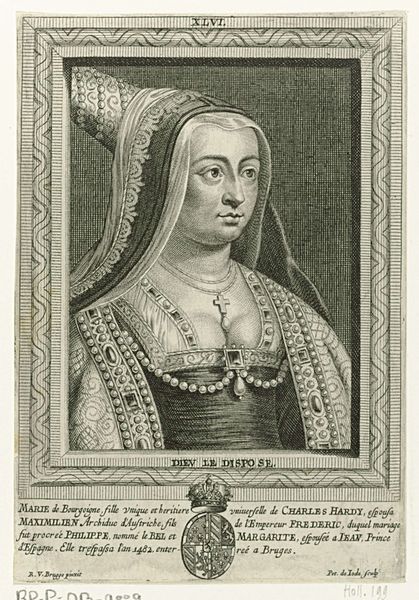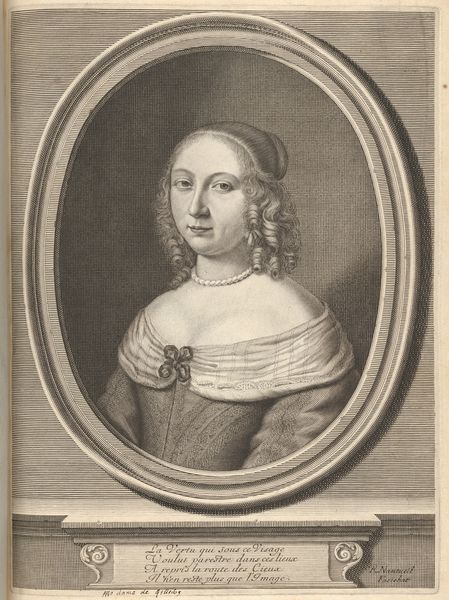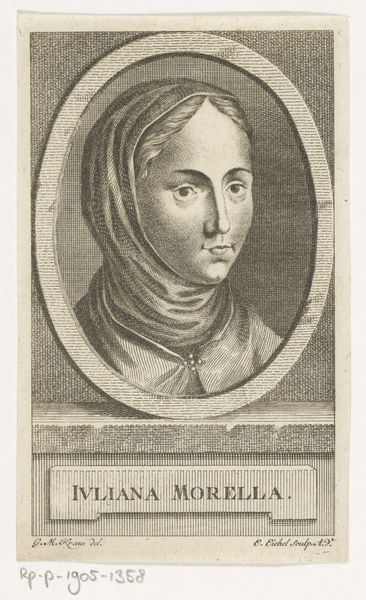
drawing, paper, pencil
#
portrait
#
pencil drawn
#
drawing
#
neoclacissism
#
aged paper
#
toned paper
#
light pencil work
#
pencil sketch
#
old engraving style
#
paper
#
personal sketchbook
#
pencil drawing
#
romanticism
#
pencil
#
sketchbook drawing
#
pencil work
#
history-painting
#
academic-art
Dimensions: height 39 mm, width 32 mm
Copyright: Rijks Museum: Open Domain
Editor: This drawing, "Ovaal portret van een jonkvrouw," or "Oval Portrait of a Young Woman," is by Jacques Kuyper and dates from 1771 to 1808. It's done in pencil on paper and is currently at the Rijksmuseum. I find the simplicity of the materials really striking, especially considering the apparent status of the subject. What can you tell me about it? Curator: Well, considering Kuyper's time, it's intriguing to think about the accessibility of paper and pencil, and the implications that has on portraiture itself. Was this sketch made as a study for a larger painting, maybe even an engraving? The delicate pencil work and aged paper invite questions about artistic labor. We must consider: What class of artisan created this object? Was this made for a private audience or commissioned work intended for the art market? Editor: That’s interesting – I hadn’t thought about it in terms of labor. Does the material, the paper itself, give us clues about that? Curator: Absolutely. Consider the toning. Does this reflect archival quality, or a different purpose altogether? A personal sketchbook versus something destined for wider circulation implies vastly different approaches to the making of art. How does this humble material challenge traditional notions of aristocratic portraiture? Editor: So, even the aging of the paper itself becomes part of the narrative…I guess I was so focused on the figure, I hadn't thought of the support. Curator: Precisely! And we should ask ourselves, how does this particular materiality and technique intersect with the Neoclassical and Romantic styles present? Editor: I see. Thanks, that perspective is super helpful. It's really changed how I see the drawing now. Curator: Indeed! Thinking about the material production provides insight into the intersection of art, class, and society in Kuyper's time.
Comments
No comments
Be the first to comment and join the conversation on the ultimate creative platform.
